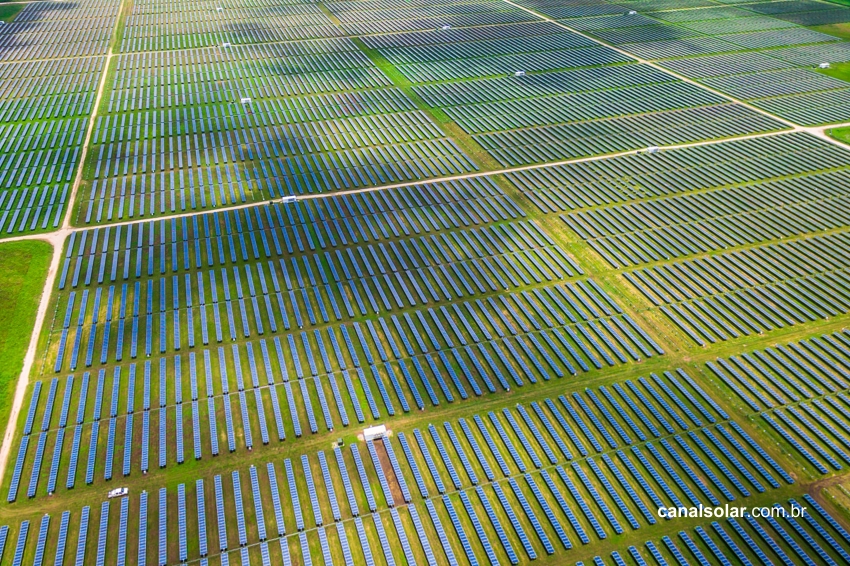In this article we will cover some aspects of creating solar farms. In order to delimit the scope analyzed here, we will treat as solar farms (i) energy generation projects using photovoltaic solar sources; (ii) intended for distributed energy generation, under the terms of ANEEL Resolution 482 (National Electric Energy Agency); (iii) installed at a point remote from consumption; (iv) and whose connection branch with the distribution network is served at high voltage (HV), that is, the total nominal power of the transformers must be greater than 112.5 kVA. This criterion relates solely to the size and gains in scale provided by enterprises of these dimensions and characteristics.
In practical terms, solar farms are projects built to provide cheap electrical energy to their owners or to those who, on a shared basis, make use of this generated energy, as is the case with consortiums of companies, people's cooperatives and condominiums.
Therefore, initially, the essential starting point for any entrepreneur wishing to build a solar farm is choosing the area. Ideally, locations where the area has little or no agricultural activity, without potential shading and the need for plant suppression (which facilitates environmental licensing), in addition to being close to substations are favored; since the enterprise must consult access to the local distributor's network, which, when evaluating the power flow injected into the network, may require adjustments and reinforcements at the connection point and nearby circuits at the feeder level.
Once the Resolution 482 deals with reinforcements, in the capacity defined here, as the responsibility of the entrepreneur (art. 5 and following §), attention must be paid to the principle of Financial Participation, regulated in Section X of Chapter III of the General Supply Conditions (Normative Resolution no. 414/2010).
As they are remote energy generation projects, solar farms do not necessarily need to have loads associated with the generation branch, but they are required to contract power in the UC (consumer unit) that will be created after the installation of the solar farm. Remembering that the power of the solar farm is limited to the power available to the consumer unit where the generation will be connected, being certain that, if the entrepreneur wishes to install a solar farm with power greater than the limit of his installation, he must request an increase in the power available, under the terms of art. 27 of Normative Resolution No. 414/2010.
Therefore, once the installation area of the solar farm has been identified and the feasibility of connecting to the grid has been assessed, the installation of a UC (consumer unit) must be requested from the local concessionaire, at the address indicated by the entrepreneur.
If the entrepreneur is the owner and consumer of the energy generated, the regulatory framework is Remote Self-Consumption (provided for in RN 482, art.2° VIII). From a legal perspective, it is recommended that the entrepreneur, once the location of the solar farm has been defined, (i) acquire the area or arrange for the lease of the area for a period that covers the useful life of the solar farm, at least; and (ii) establish a branch of your Headquarters on site, making the solar farm a part of your business.
The opening of the branch implies the amendment of the Head Office's Articles of Association to state the corporate purpose of “generation, transmission and distribution of electrical energy, as well as the development of projects related to these activities, the commercialization of them and the respective rights” (CNAEs – 35.11-5-02 – Activities of coordination and control of the operation of generation and transmission of electrical energy; 35.11-5-01 – Generation of electrical energy; and 35.12-3-00 – Transmission of electrical energy), in addition to the request to open the branch at the address in the solar farm area.
Once the branch opening process has been approved, the solar farm, duly connected to the concessionaire's network, is able to inject into the network the energy that will be counted in the deduction of the consumer units owned by the matrix, according to the percentages freely defined by the entrepreneur in the Credit Apportionment Form.
Remembering that the owner of a solar farm can also be a consortium, a cooperative or a condominium, either through a pool of financial resources to acquire the solar farm, or through a lease agreement for the solar farm, in which the generation asset is made available to the consortium, cooperative or condominium through bilateral negotiation that guarantees ownership with the local concessionaire, followed by the apportionment of credits in the usual way for these figures: shared generation and enterprise with multiple consumer units, respectively.
















